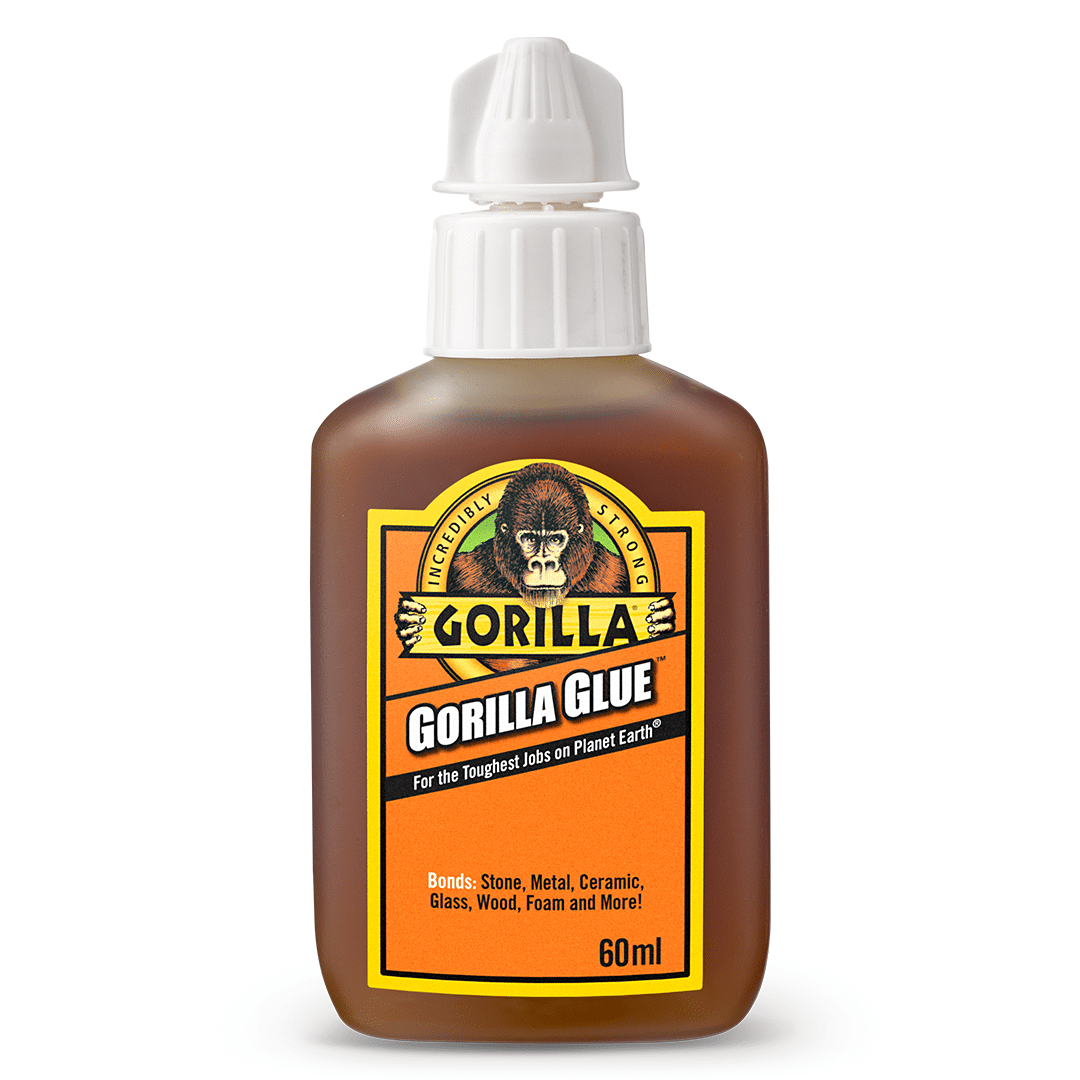If Gorilla Glue is not working, it may be due to improper surface preparation or expired adhesive. Gorilla Glue effectiveness can be compromised by contamination or improper application technique.
To ensure optimal results, make sure to follow the manufacturer’s instructions carefully. Properly clean and dry the surfaces before applying the glue. Additionally, check the expiration date on the product to ensure it is still usable. If problems persist, consider contacting the manufacturer for further assistance.
Remember, using Gorilla Glue correctly is essential for achieving strong and durable bonds.

The Sticky Situation: When Gorilla Glue Fails
Gorilla Glue is a popular brand of adhesive that is known for its strength and versatility. However, there are times when even the strongest glue can fail. Let’s take a look at some common reasons for adhesive disappointment and the myths versus facts about super glue performance.
| Reasons for Adhesive Disappointment | Myths Versus Facts About Super Glue Performance |
|---|---|
| – Not using the right type of glue for the job – Improper surface preparation – Applying too little or too much glue – Inadequate drying time – Exposure to moisture or extreme temperatures |
– Myth: Super glue works on all materials – Fact: Super glue works best on clean, dry surfaces – Myth: More glue is better – Fact: Excess glue can weaken the bond – Myth: Super glue dries instantly – Fact: Super glue requires time to set and cure |
By understanding the common reasons for adhesive disappointment and the myths versus facts about super glue performance, you can ensure that your next project is a success. Remember to always read the instructions carefully and follow the recommended application guidelines for the best results.
Surface Matters: Pre-application Essentials
Gorilla Glue is known for its versatility, but certain materials can pose a challenge. Before applying the glue, it’s crucial to ensure that the surface is clean and free from any dust, grease, or debris. This is essential for achieving optimal stickiness and bonding. When working with wood, it’s important to note that oily and exotic woods can be more difficult to bond with Gorilla Glue. Metals can also be challenging, especially those with smooth surfaces. Additionally, plastics and rubber may require special treatment to achieve a strong bond. Understanding the nature of the material you are working with is crucial for successful application and long-lasting results.
Temperature And Humidity: Invisible Saboteurs
When using Gorilla Glue, it’s crucial to create ideal conditions for optimal bonding. Temperature and humidity play a significant role in the effectiveness of the adhesive. The ideal conditions for Gorilla Glue use involve maintaining a temperature range of 70-75°F and humidity between 50-60%. Adjusting your environment to meet these criteria can vastly improve the bonding process. It’s important to store the glue in a cool, dry place and seal it properly after use to prevent exposure to unfavorable conditions. By carefully controlling the temperature and humidity, you can ensure that Gorilla Glue performs at its best, providing strong and durable bonds for your projects.

Application Techniques: Less Is Often More
When it comes to applying Gorilla Glue, less is often more. The art of applying just enough glue is crucial for achieving stronger bonds. Instead of using excessive amounts of glue, it is important to focus on spreading methods that promote better adhesion. By using a thin layer of glue and evenly spreading it across the surfaces to be bonded, you can ensure a more effective and durable bond.
One technique to consider is applying the glue using a small brush or applicator. This allows for more precise control and prevents over-application. Another method is to use a spatula or a flat edge to spread the glue evenly, ensuring complete coverage. By avoiding thick layers and excessive amounts of glue, you can prevent issues such as foaming or uneven drying.
Remember, the key is to apply just enough glue to create a strong bond. By following these application techniques and spreading methods, you can maximize the effectiveness of Gorilla Glue and achieve better results in your projects.
Clamping: The Secret To A Lasting Bond
When using Gorilla Glue, achieving a lasting bond depends on the clamping process. It’s crucial to select the right clamp for your specific project. This ensures even pressure and a secure hold. Additionally, the clamp time plays a key role in the bonding process. The ideal duration for clamping depends on factors such as temperature and humidity. It’s important to consider these aspects to achieve the best results for your woodworking or DIY project.
Troubleshooting A Weak Bond: Quick Fixes
| Gorilla Glue Is Not Working |
| Troubleshooting a Weak Bond: Quick Fixes |
| Assessing the Failure Point |
Ensure surface is clean before applying glue. Use sandpaper for better adhesion. Apply pressure during drying for a stronger bond. Opt for a two-part epoxy for heavy-duty repairs. Evaluate temperature and humidity conditions for optimal results.
Alternatives To Gorilla Glue: Exploring Options
Explore effective alternatives if Gorilla Glue is failing to meet your needs. Discover suitable replacements for different applications.
| Gorilla Glue not working? Explore alternatives like epoxy or acrylic adhesives. |
| Consider natural adhesives for eco-friendly bonding solutions. |

Preventative Measures: Best Practices For Future Projects
Struggling with Gorilla Glue not working on your project? Consider using mechanical fasteners or epoxy as preventative measures for future projects. These alternatives can provide a stronger and more reliable bond, ensuring the success of your DIY endeavors.
| When storing glue, ensure lids are tightly sealed to prevent drying out. |
| Store glue in a cool, dry place away from direct sunlight or extreme temperatures. |
| Avoid leaving glue open for extended periods to maintain its adhesive properties. |
| Before starting a project, check expiration dates on glue bottles for effectiveness. |
| Clean the bottle’s nozzle after each use to prevent clogging and ensure smooth flow. |
Frequently Asked Questions
Why Isn’t Gorilla Glue Working For Me?
If Gorilla Glue isn’t working, it may be due to improper surface preparation. Make sure to clean and dry the surfaces before applying the glue. Also, ensure that you are using the correct type of glue for the materials being bonded.
How Long Does Gorilla Glue Take To Dry?
Gorilla Glue dries in about 1-2 hours, but full curing may take up to 24 hours. Keep in mind that the drying time can vary based on temperature, humidity, and the amount of glue applied.
Can I Use Gorilla Glue On Plastic?
Yes, Gorilla Glue can be used on plastic, but you should ensure that the plastic is clean and dry before applying the glue. It is also important to note that Gorilla Glue may not work well on all types of plastic, so be sure to test it on a small area first.
How Do I Remove Gorilla Glue From Surfaces?
If you need to remove Gorilla Glue from surfaces, you can use acetone or isopropyl alcohol. Apply the solvent to the glue and let it sit for a few minutes before gently scraping it off with a plastic scraper or credit card.
Be sure to use gloves and work in a well-ventilated area.
Conclusion
It is clear that Gorilla Glue is not living up to its reputation as a reliable adhesive. The numerous reports of it not working as expected are concerning, and it is essential to explore alternative options for your adhesive needs.
It is always important to thoroughly research and read reviews before making a purchase to avoid disappointment and wasted time and money. Trustworthy brands and products are key in ensuring successful bonding projects.

